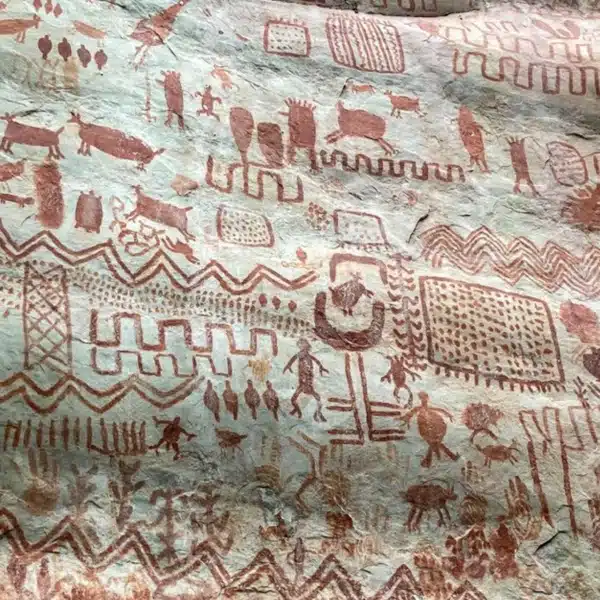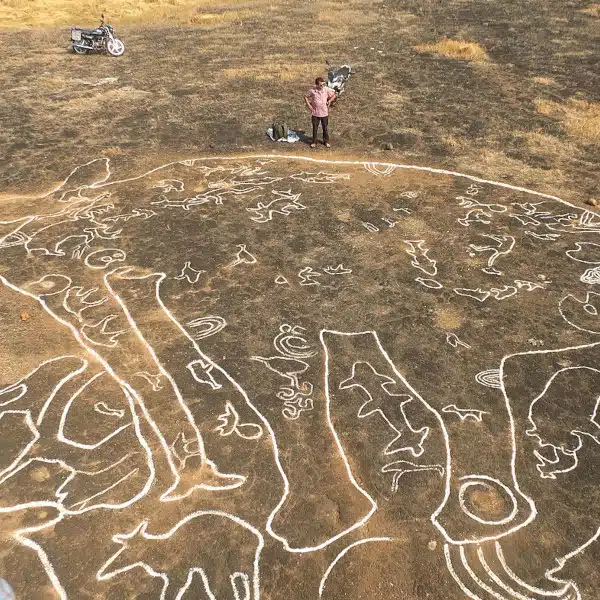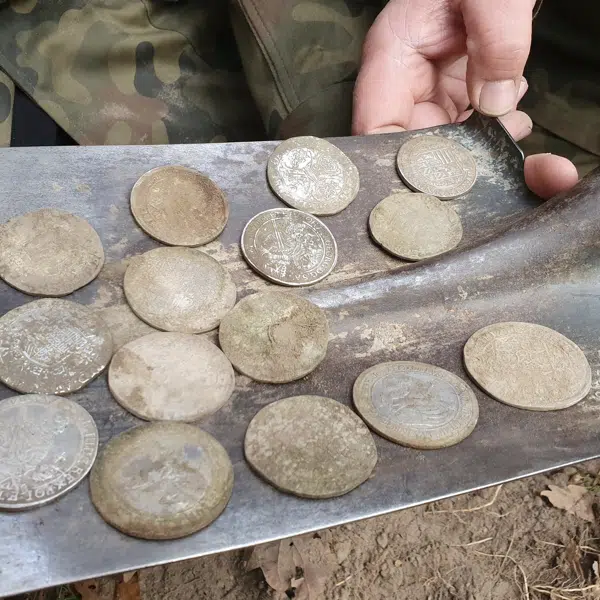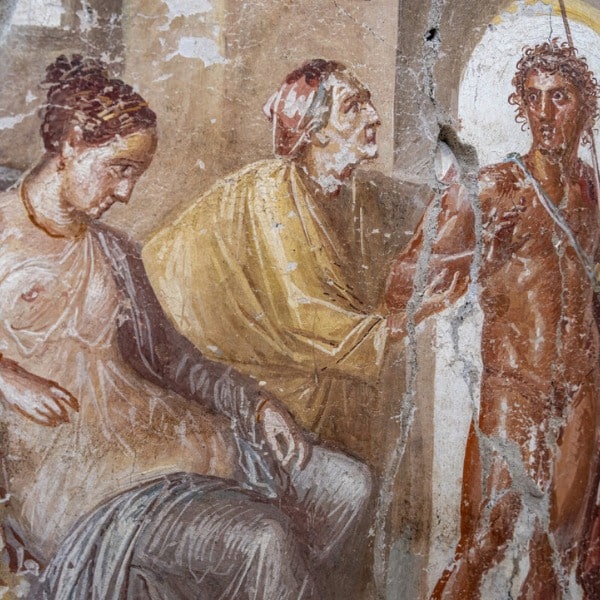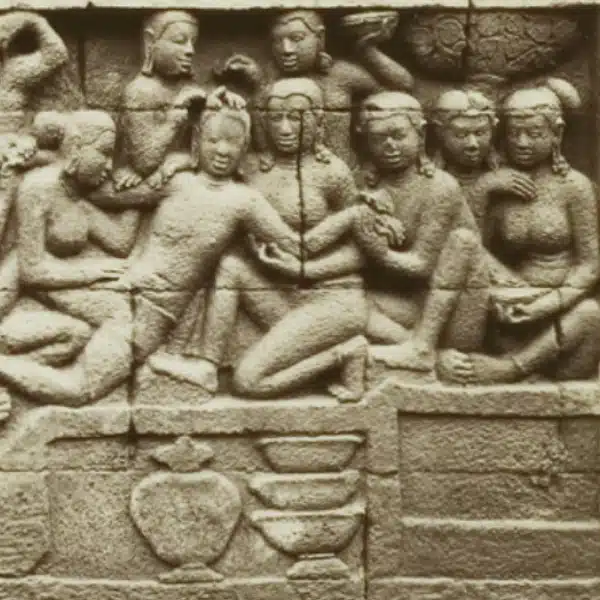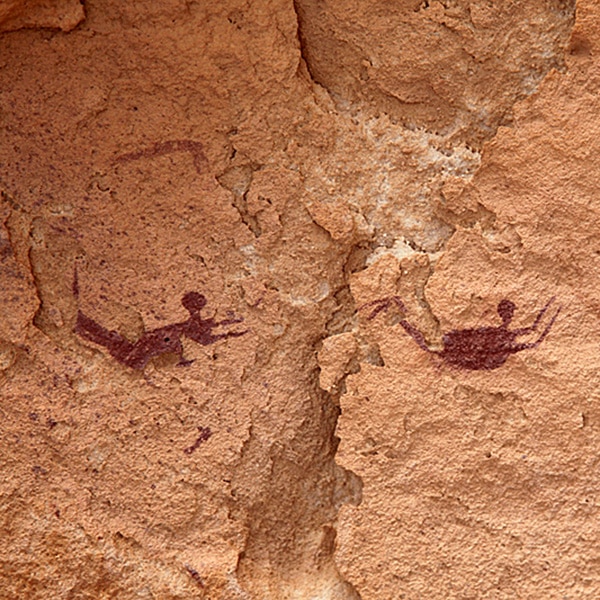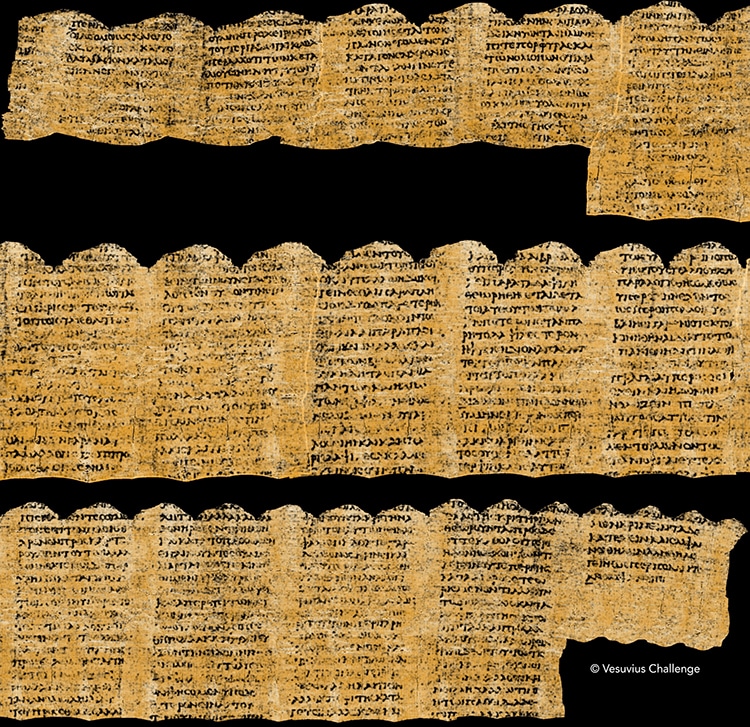
2,000-year-old text. (Photo: Vesuvius Challenge)
Mount Vesuvius erupted in the year 79 CE. Lava coursed down the slopes while ash erupted into the sky, blanketing the nearby region in a veil of scorching death. Civilians in Pompeii were drowned in the ash, their bodies found many centuries later as cavities in the calcified layers of ash that preserved their crouched and protective stances. Frescoes on building walls were also perfectly preserved. In nearby Herculaneum, volcanic material blanketed a wealthy noble's villa. Inside the library of the home, precious scrolls were carbonized by the heat. Looking like oddly shaped lumps of coal, they were discovered in 18th-century excavations. However, reading the long lost words has been impossible until recently. The largest advance has just been made, with three impressive students using AI to take home the grand prize of the Vesuvius Challenge for illuminating over 2,000 characters.
The Vesuvius Challenge was begun by Brent Seales, an American computer scientist, and entrepreneurs Nat Friedman and Daniel Gross in March 2023. It has offered over a total of $1 million in prizes for successive steps on the journey of deciphering the ancient scrolls. The process began with CT scans of the carbonized rolled parchments. These were made public, and with Seales' X-ray tomography and computer vision technology which “unwrapped” them, the game began. The first task was to decipher the carbon ink upon the carbonized surface, which Seale himself worked upon.
Then in October 2023, Luke Farritor—an American student—found the first legible world among the rubble. It was “porphyras,” ancient Greek for “purple.” Now, Farritor has nabbed the grand prize as part of a team with Julian Schilliger, who studies robotics in Switzerland, and Youssef Nader, an Egyptian PhD student studying in Germany. The young students found each other from around the globe to combine their talents in artificial intelligence, pulling long hours to decode the ancient texts. Their algorithm was able to “read” over 2,000 Greek characters from the charred remains of the scrolls. This easily nabbed them the prize of $700,000.
The translated text discusses food, music, and pleasure. It was likely written by Philodemus, an Epicurean philosopher, who may have served as the philosopher-in-residence in the library of the grand house. According to a statement from the Vesuvius Challenge, “Scholars might call it a philosophical treatise. But it seems familiar to us, and we can’t escape the feeling that the first text we’ve uncovered is a 2,000-year-old blog post about how to enjoy life. Is Philodemus throwing shade at the stoics in his closing paragraph, asserting that stoicism is an incomplete philosophy because it has ‘nothing to say about pleasure?' The questions he seems to discuss—life’s pleasures and what makes life worth living—are still on our minds today.” Modern minds can only wait and dream for the rest of the texts.
A team of students won the grand prize of the Vesuvius Challenge by deciphering over 2,000 characters of an ancient scroll charred to a crisp by Mount Vesuvius.

The text. (Photo: Vesuvius Challenge)
This incredible advance is made possible by sophisticated artificial intelligence trained by young brilliant minds.
h/t: [Smithsonian Magazine]
Related Articles:
Italian Archeologists Created 100 Plaster Casts of Pompeii Victims Petrified in Ash
Watch the Final Hours of the Once-Vibrant City of Pompeii
Pompeii’s Ancient Roads Had Raised Crosswalks for People to Safely Avoid the Muddy Streets











































































